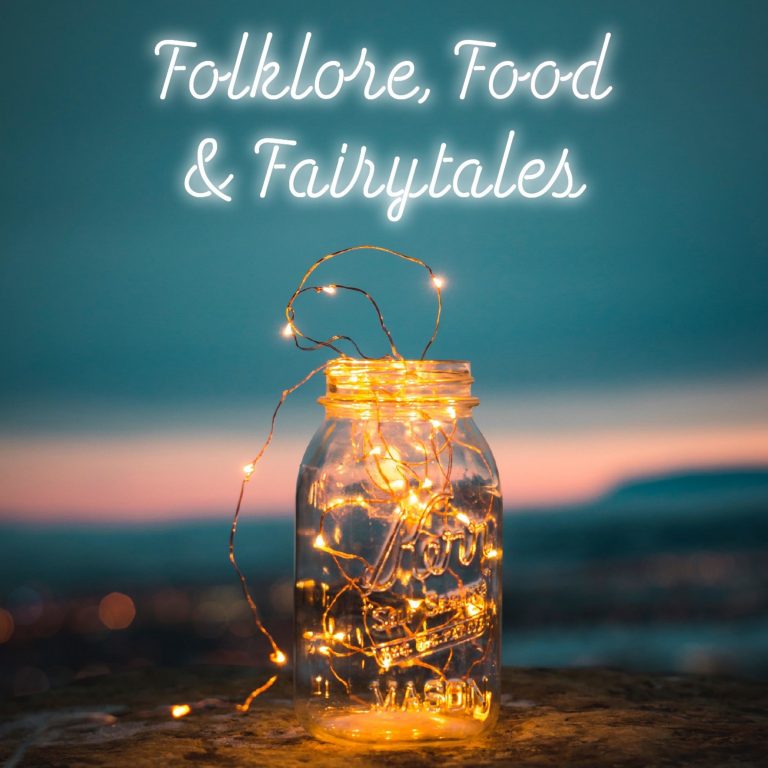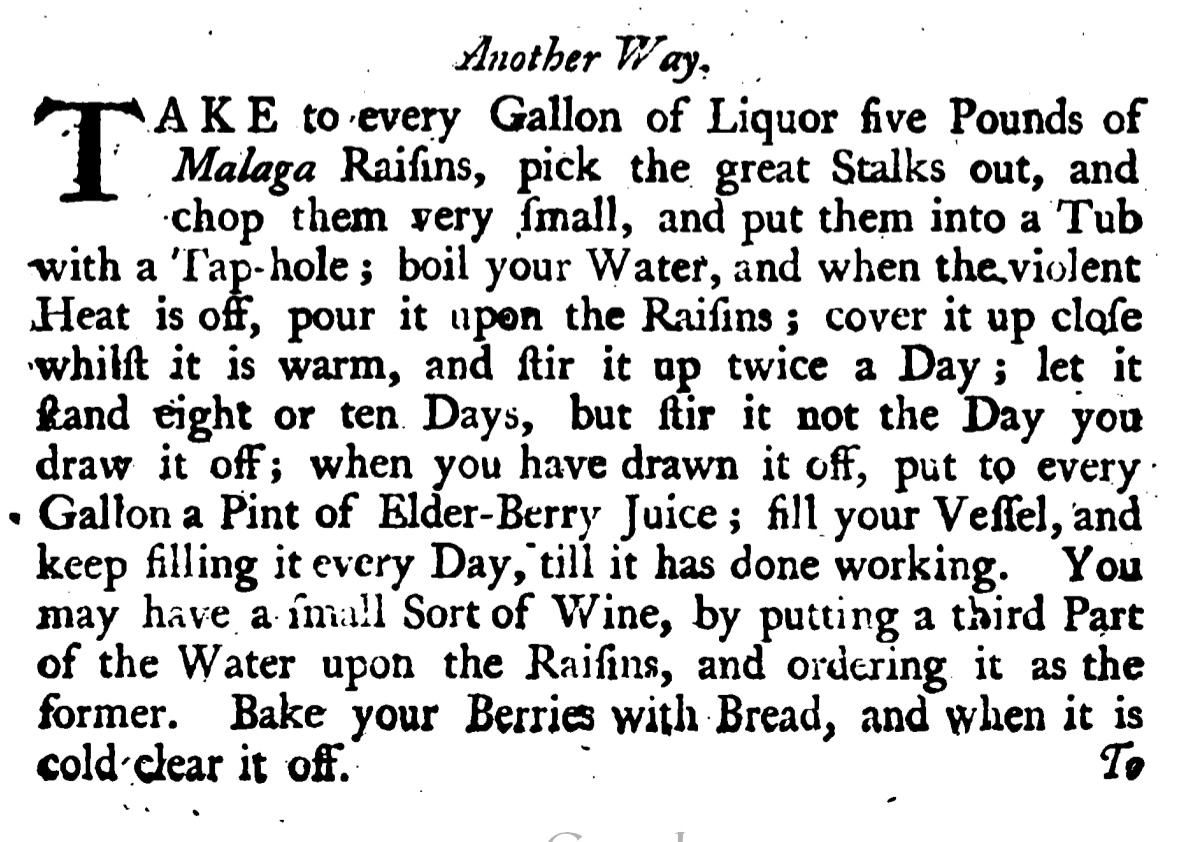In which we discover that you should stick to your path, no matter what others say, that you shouldn’t let an elderberry pudding get in the way of the rest of your life and that perfectly good castles only lie empty for a good reason.
In which we discover that you should stick to your path, no matter what others say, that you shouldn’t let an elderberry pudding get in the way of the rest of your life and that perfectly good castles only lie empty for a good reason.
The Recipe in this episode is Elderberry Cordial
The Story in this episode is The Dark Spectre adapated from Ruth Manning Sanders – Spooks and Spectres
You can find the interviews in my newest interview series here: How Food Frames Stories. You can find my interviews with storytellers here: Vernacular Voices of the Storyteller
You can also subscribe (or just read) my free newsletter for further snippets of folklore, history, stories, vintage recipes, herblore & the occasional cocktail.
You can also find out more at Hestia’s Kitchen which has all past episodes and the connected recipes on the blog. If you’d like to get in touch about the podcast you can find me on Twitter or Instagram at @FairyTalesFood.

Well, what did you think of the story? I couldn’t not give you a spooky story in October. I liked this one very much. As I mentioned it is adapted from a story by Ruth Manning Sanders in her book of Spooks and Spectres. She mentions that it comes from South Tyrol and I searched and searched to see if I could find the original.
Terrible Translation
My German is passable but I must admit I mostly looked at the translated volumes. I couldn’t find it, there is a tale of a boy without fear but the ones I could find were usually a longer story and the only thing they have in common with this one is that they get riches from a ghost. The boy, usually called Johnny, has various incidents where it is to his advantage to be without fear unlike our Jack who only has the one. They are similar to a cross European variant of this tale which is known as ATU326 – The Youth Who Wanted to Learn What Fear Is.
The Infamous Elderberry Pudding
They also don’t have elderberry pudding. Elderberries are a big crop in Austria and they are famous for an elderberry syrup (Holunder sirup) and elderberry compote (usually with added plums and spices) known as Hollerkoch so the inclusion of the fruit in our tale does give it a a ring of verisimilitude. I’m just not sure if Ruth adapted a tale so much that I can’t find its original or if I just haven’t come across the original tale yet. I don’t suppose it really matters, it’s a good tale no matter what. I love that Jack is that worried about his pudding being spoiled. I imagine in a time where sweet things were hard to come by, a delicious fruity pudding would be a prized thing.
Jacks & Puddings
I could talk to you about puddings and their history but I’m not going to as I have already covered that in a previous episode (see Jack, the Giant Killer). There must be something about heroes named Jack and pudding. So we are going to look at elderberries instead, the culinary, folklore and folk medicine history of them. The first thing before I continue is to say that all parts of the elder bush are poisonous. The toxins in the berries and flowers can be tempered with heat but the rest of the plant is dangerous and it should not be used as a medicine no matter what the ancients may have suggested. There, that’s the disclaimer over, now we can have fun.
Dual Natured Tree
I have shared with you a brief overview before of the folklore of the Elder tree last October and I think unlike my pudding history I will share this with you again before ewe move on to the berries specifically: The Elder has a dual nature, considered both a poor man’s medicine chest for the amount of folk remedies that can be derived from its fruit, flowers and bark, a witch deterrent as well as a tree whose form a witch could take! It also supposedly offered protection from lightening because it was considered one of the woods that made up the cross at the crucifixion. It was believed that if you cut an elder tree it would bleed, which many thought was a reflection of what was happening to the witch who used it as a disguise.
Keep Away from Fire
It was also not to be used for firewood, usually because it was considered to invite the devil into your house. Although possibly it was because elder spits and screams as it burns due to the sap in the wood. This makes it all the more strange that the name elder comes from the saxon word ‘aeld’ meaning fire because the the pith was easy to remove leaving hollow stems which could be used to blow air into the centre of a fire to make it burn hotter. This may also be what led to the belief in Somerset that Elder could not be destroyed unless it burned.
Dryad?
There are even some experts who believe that the elder was essentially given bad press in order to discourage because many of its uses came from its pagan roots. Certainly in Denmark it is believed to hold the Hylde-Moer or Elder mother, a from of dryad, and she should always be asked before giving up any part of her tree. Silence was supposed to be agreement which is very convenient don’t you think.
Elderberries on the other hand were pretty much considered a blessing rather than a curse but perhaps if you are picking your own maybe request permission first, it’s only polite after all even if you’re the one that planted the bush. They were more of a blessing for their medicinal value though, there is less of the mystical about them. There was even a book written about the elder in 1644 called The Anatomie of the Elder by Dr Martin Blochwich where the first recorded use of elderberry as a treatment was recorded.
Medical Gold
This was in the form of a ‘Rob’ where the juice was heated until it thickened into a syrup very much like pomegranate molasses still is today. This was used to treat coughs and colds and actually recent studies have shown some results which may indicate that consumption of elderberry extracts can reduce the length and severity of influenza. More studies with larger groups of subjects will be needed though to see if these results can be replicated. This extract was also used to induce sweating in the patient and as a disinfectant in time of plague.
There were other ways of using the berry, if made into wine it could be used to treat catarrh and arthritis and an oil extracted from the kernels was used to treat skin conditions taken externally and as an emetic when taken internally. May I take this opportunity to remind you how poisonous the elder is. It was used as an addition to other herbs and berries as medicines for feverish infections, bladder stones and sleeplessness amongst others. You can even buy this book to find more remedies but you can also find it free to read online at a number of university libraries just in case you’ve got other things to spend your money on. Other herbals mentioned it in passing too even if like Culpeper its more about the berries’ hair dye properties.
Bring on the Hot Wine
What about it’s culinary uses you cry, well it does have lots including the above mentioned fruit compote and syrups for drinks. In the UK though it does seem to have been used a lot to make wine. The Housekeeper’s Pocket Book of 1739 has 3 recipes, one very simple, one more complex which is spiced with cloves and cinnamon and one which is combined with raisins to make a rich sweet wine. Elizabeth Raffald in The Experienced English Housekeeper from 1783 also has a recipe for the ‘Rob’ although it appears in a much more culinary context than the medical one above. I have to say that if I had a horrible cold I might much prefer a hot, sweet, spiced elderberry wine or cordial than a lemsip!


A Recipe
I have no recipe of my own to share as I never have any elderberries although Ive been lucky enough to try both the cordial and a liqueur at a farmers market and have regretted not buying cases. This recipe does seem like it would work though so if you have access to them and are prepared to remove all the stems (freeze bunches for a couple of hours then separate out the berries with a fork) have at it: https://suzanneaskham.com/2013/09/15/recipe-elderberry-cordial/
Featured Image: https://unsplash.com/photos/zi7q-9zTVMg?utm_source=unsplash&utm_medium=referral&utm_content=creditShareLink

